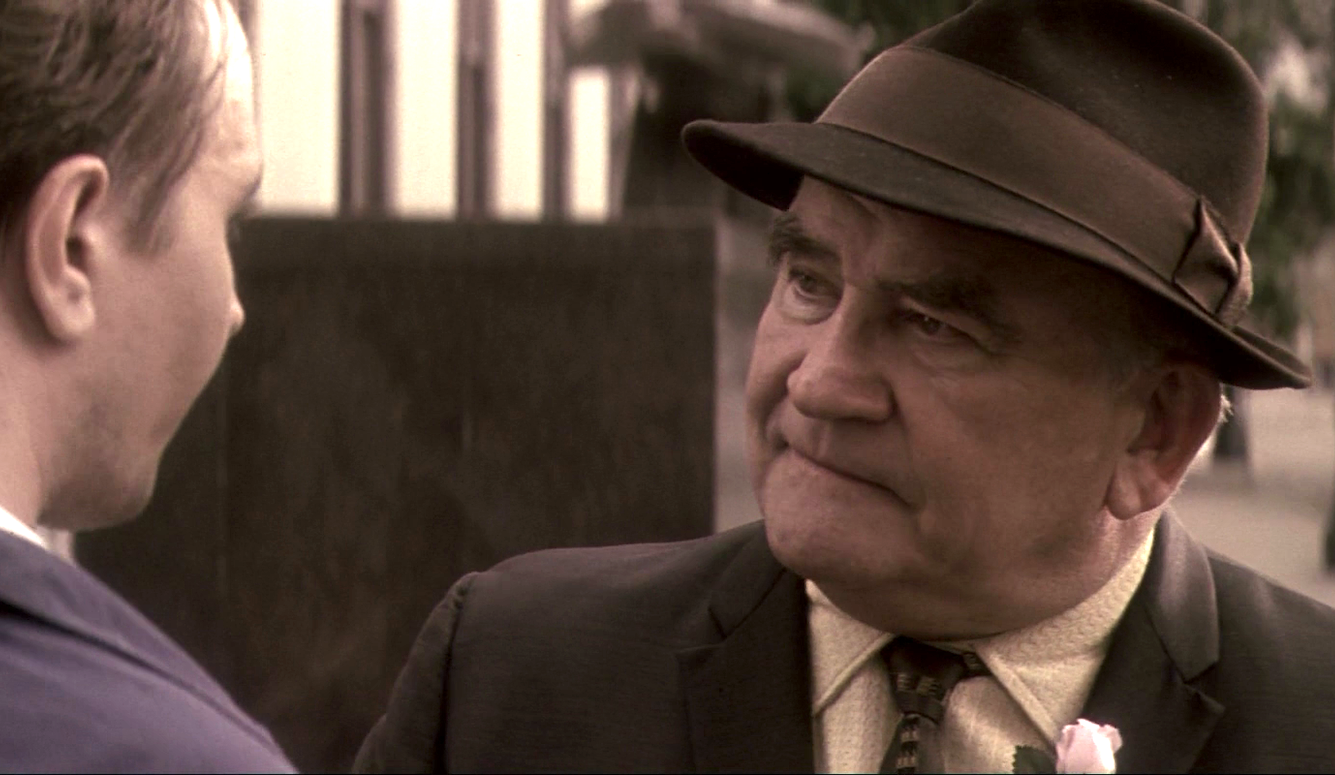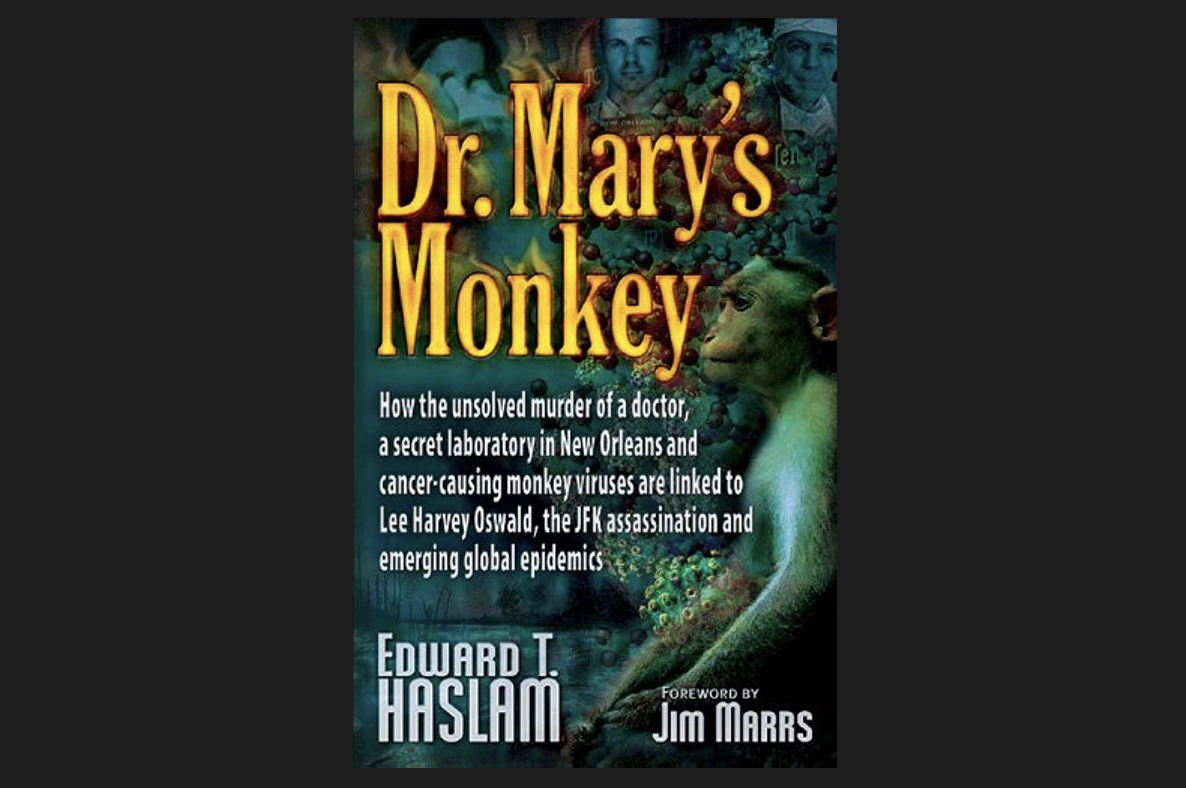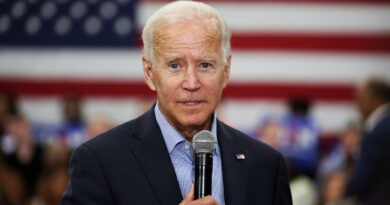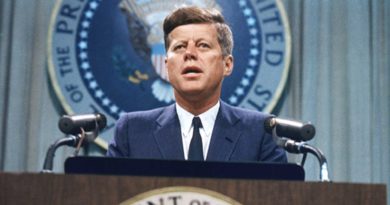At the Corner of Camp and Lafayette
The assassination of John F. Kennedy is perhaps the most infamous crime in American history. Yet the only person ever to be brought to trial for the killing was an obscure—and completely innocent—businessman named Clay LaVergne Shaw. What’s more, his trial took place not in Dallas, where the US President was killed by lone assassin Lee Harvey Oswald, but almost 500 miles away, in New Orleans.
Shaw’s prosecution emerged from the homophobic conspiracism of New Orleans District Attorney Jim Garrison (1921–1992), who’d been instructed by extremely (some might say comically) dubious informants that Shaw had conspired to kill JFK either as part of a “homosexual thrill killing” led by “high-status fags,” or a CIA plot aimed at reversing Kennedy’s foreign policies (or some combination of both). At one point during the trial, the prosecution had a memo read aloud, based on a lurid interview with fabulist Perry Russo, to the effect that “[Russo] remembers seeing [Shaw] at the Nashville Street Wharf when he went to see J.F.K. speak. He said he particularly remembers this guy because he was apparently a queer. It seems that instead of looking at J.F.K. speak, Shaw kept turning around and looking at all the young boys.”

The case never should have gone to trial, and the jury properly acquitted Shaw after less than an hour of deliberation. Nevertheless, Garrison has remained a folk hero among conspiracy theorists, much thanks to the sympathetic treatment he received in Oliver Stone’s 1991 film JFK, the plot of which was partly based on Garrison’s memoir, On the Trail of the Assassins. One writer for the Advocate summed up JFK as “the most homophobic film ever to come out of Hollywood.”
Stone’s credulous treatment of Garrison’s delusions has obscured a more prosaic truth: New Orleans’s agitated political subculture did play a role in shaping Oswald’s radical worldview, though hardly in the way suggested by JFK. Oswald lived the first five years of his life in the city, returned briefly as a teenager, and then again in early 1963, about seven months before he assassinated the President. There, according to the Warren Commission Report, “he obtained work as a greaser and oiler of coffee processing machines for the William B. Reily [Company]. He lost his job on July 19, 1963, because his work was not satisfactory, and because he spent too much time loitering in the garage next door, where he read rifle and hunting magazines.”
Oswald’s brief (and unofficial) involvement with the Fair Play for Cuba Committee (FPCC) during this period has been closely scrutinized, since it speaks to the theory that the assassin was acting on specific geopolitical grievances. At one point, he even got into a street altercation with anti-Castro activists while distributing pro-Castro literature—an Oswaldian biographical subplot that (as discussed below) lies at the heart of the Garrison/Stone narrative.
As the Warren Commission later reported, Oswald’s involvement with the FPCC was brief and informal. (The New Orleans chapter, of which Oswald was the only member, had never been accredited by the national organization.) But the controversy surrounding the US embargo against Cuba, the scope of which was decisively expanded under Kennedy’s presidency, had been a political flash point in New Orleans for several years. “From the earliest days of New Orleans’s commercialization as a port until the imposition of the U.S. embargo … New Orleans’s constant trading partner was Havana, right across the Gulf of Mexico,” wrote Ned Sublette in his outstanding 2008 history of the city. “The 1962 U.S. embargo of Cuba was also in effect an embargo of New Orleans, taking away a chunk of what had long been the city’s core business.”
In fact, one of the leading institutional boosters of that “core business” had been the International Trade Mart (ITM), the offices of which at the corner of Camp and Common Streets (which have since been torn down and replaced with a Four Seasons hotel) were the site of one of Oswald’s leafletting efforts. Shaw, the aforementioned victim of Garrison’s witch hunt, had helped create the ITM in the 1940s, and was still managing it at the time of JFK’s assassination. He was also a published playwright, a decorated World War II veteran, an architectural preservationist, and, yes, very likely an active member of the French Quarter’s underground gay scene. The story of JFK-era New Orleans, which has been closely studied by legitimate historians and conspiracy theorists alike during the last six decades, is full of fascinating characters like this.
In January, I visited the Big Easy for the first time, on the occasion of Quillette’s 2023 New Orleans Social, and made sure to put the JFK assassination backstory on my touristic itinerary. By way of some casual Googling, I was able to find a tour guide with a lively interest in this niche, and then managed to drag along my editorial colleague Jamie Palmer—notwithstanding his expressed concerns that he didn’t “much fancy being lectured to for three hours by a crank.” I reassured him by noting that I’d found my expert through a popular international tour brokerage site. Jamie and I have been working together as Quillette editors for more than five years. Surely, he trusted me enough to know that I wouldn’t be signing him up for an afternoon of conspiracist ramblings.
Alas, as things turned out, Jamie’s fears proved quite prescient. Our guide, whom I will call Dave, was courteous, punctual, and burbling with enthusiasm for his mission—which was, he announced, to demonstrate the utter falsity of the conclusions contained in the Warren Report. Over the next three-plus hours, he walked us around downtown New Orleans, pointing out sites connected to Lee Harvey Oswald and his supposed handlers. In between, we would take pit stops in parks and hotel lobbies so that he could open his laptop computer and play footage from JFK, the plot of which he clearly regarded as historically authoritative.
Jamie and I spent rather a long time, for instance, being lectured to at the corner of Camp and Lafayette Streets, where important scenes from JFK were filmed. As readers who’ve seen the movie will know, one of the smoking guns offered by Garrison (and then Stone) was that Oswald had once distributed leaflets marked with the address 544 Camp Street. As Kevin Costner (playing Garrison) dramatically notes in the film, that address shares the same physical structure as 531 Lafayette Street, which sits around the corner and once housed the offices of FBI veteran and private investigator Guy Banister. The real Banister died of coronary thrombosis in 1964, years before Shaw went to trial. Yet the fictional version lives on as one of the villains of JFK (in which he was played by Ed Asner).

I have chosen not to identify “Dave” by name because he struck both Jamie and I as a genuinely nice guy who just happens to have fallen into a very deep rabbit hole. But there did come a point when we had to politely inform him that it was time to wrap things up. By this time, Dave had gone well beyond the plot-line of JFK, and was holding forth on an elaborate theory by which Oswald was connected to a deadly conspiracy connected to the development of secret vaccines at New Orleans’s Infectious Disease Laboratory. The details are too complicated to summarize in this space. But suffice it to say that they involve a linear particle accelerator gone horribly awry. (For those interested, the book to read has the memorable title of Dr. Mary’s Monkey: How the Unsolved Murder of a Doctor, a Secret Laboratory in New Orleans, and Cancer-Causing Monkey Viruses Are Linked to Lee Harvey Oswald, the JFK Assassination and Emerging Global Epidemics.)

When Jamie and I eventually debriefed following the tour, we agreed that it wasn’t in us to leave Dave a negative review on his website. After having spent all that time in his company, doing so would have felt mean. Moreover, I’m guessing that most of the people who seek out Dave’s services are looking for exactly this kind of slant. The very least that can be said for JFK is that the fictional story it presents is a lot more exciting than the grubby reality of Oswald’s last months in New Orleans, which were marked by family discord, menial work, and a clumsy stab at activism.
Another reason I don’t want to embarrass Dave is that he’s clearly a liberal-minded guy who feels uneasy about Garrison’s homophobia. During our tour, he made a point of showing us the site of the infamous UpStairs Lounge arson attack of June 24th, 1973, which took the lives of 32 people, mostly gay men. Later on in the tour, when I asked about Garrison’s ugly politics, Dave awkwardly evaded the question. Like many conspiracy theorists, he employs a strategy of enforced cognitive dissonance to wall off his mind from inconvenient facts.
Even Stone himself has disassociated himself from Garrison in recent years. In 2021, he released a four-part documentary series called JFK: Destiny Betrayed, which combines many of the geopolitical themes contained in JFK with claims promoted by conspiracy theorist James DiEugenio in his 2018 book, The JFK Assassination. Amazingly, Garrison’s name is spoken only once in the entire series, and even then only by narrator Whoopi Goldberg in a glancing reference to the arrest of Clay Shaw.
I learned all this not from watching Destiny Betrayed itself (life’s too short for that), but rather from reading Oliver Stone’s Film-Flam: The Demagogue of Dealey Plaza, a newly published book authored by Quillette contributor (and one-time self-confessed JFK “conspiracy freak”) Fred Litwin. By one of those happy journalistic coincidences, a review copy of Litwin’s new release was waiting for me when I got home from New Orleans, its chapter titles corresponding to Litwin’s point-by-point rebuttals of Destiny Betrayed. These include “Was Lee Harvey Oswald a Fake Defector?”, “Did the CIA Lobby to Have Allen Dulles Put on the Warren Commission?”, and “Did the Conspirators Substitute JFK’s Brain?” (A disturbing number of JFK conspiracy theories involve the weight, shape, and ultimate fate of the President’s skull contents.)
This isn’t the place for a proper review of Litwin’s book because I didn’t read all of it. Rather, I skipped straight to the chapters touching on New Orleans, which (among other things) make short work of the Goldberg-intoned claim, contained in the fourth episode of Destiny Betrayed, that Guy Banister “gave Oswald his own office at 544 Camp Street. Oswald now began to use the office to print up and stamp pro-Castro literature.” As Litwin explains at great length, there is no evidence that Oswald ever had an office at 544 Camp Street (or at the adjoining Lafayette Street address for that matter). He also demonstrates that the Hands off Cuba! leaflets shown in both the original JFK and Destiny Betrayed, stamped “544 Camp Street,” are fake: The actual leaflets that Oswald handed out in New Orleans were stamped with either his own home address or post office box.
There are 46 chapters in Oliver Stone’s Film-Flam, each crammed with this level of technical detail. And a reader may be left to wonder how Litwin could be motivated to spend so much time and energy on debunking a single documentary series. But it’s important to remember that Stone isn’t just any film director. Yes, his reputation took a hit after JFK was released. But the film ended up with eight Academy Award nominations and earned over US$200 million in box-office receipts. Stone went on to make more movies, and still gets feted at film festivals to this day, even as he continues to peddle conspiracy theories. Shortly after the invasion of Ukraine, Litwin notes, Stone told a podcaster that the United States was preparing a false-flag operation involving “a low-yield nuclear explosion” that would kill thousands of people. This is in keeping with Stone’s 2016 propaganda film, Ukraine on Fire, in which he advanced the claim that the ouster of Ukraine’s pro-Russian president, Viktor Yanukovych, was engineered by a US-led coup d’état. According to the Kremlin’s account of Stone’s 2019 interview with Vladimir Putin, the filmmaker even asked the Russian leader to become his daughter’s godfather.
That said, I frankly wonder how many people will buy a book like Oliver Stone’s Film-Flam. Back when I was pitching my own book on the subject of conspiracy theories, a HarperCollins editor gave me the sage advice not to market the thing explicitly as a debunking project. The problem with debunking books, he told me, is that conspiracy theorists have no interest in reading them, and few others have any real need or appetite for the corrective information they contain. And so the only customers who buy copies are debate junkies who want to get the best of dinner-table fights with a crackpot uncle, in-law, or, in this case, tour guide.
This advice came back to me as I tried to make my way through Litwin’s book, which struck me as an encyclopedic guide to winning an argument that I really don’t want to have. In the end, Dave’s street-corner speechifying couldn’t entirely spoil what turned out to be a lovely stroll around downtown New Orleans for me and Jamie. I really can’t say that it would’ve been much improved if I’d started arguing with our tour guide about the final resting place of JFK’s cranial matter.


